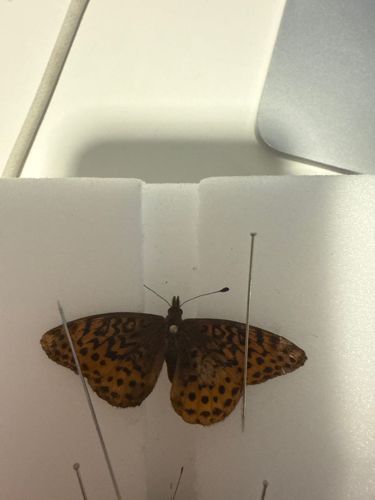Fritillary butterfly
Scientific Name: Speyeria (likely) or Boloria (likely)
Order & Family: Lepidoptera, Nymphalidae
Size: Typically 3-7 cm (1.2-2.8 inches) wingspan, depending on the specific species.

Natural Habitat
Meadows, open woodlands, forested areas, mountain clearings, and bogs, often near host plants for larvae.
Diet & Feeding
Adults feed on nectar from various flowering plants. Larvae (caterpillars) feed on the leaves of specific host plants, most commonly violets (Viola species).
Behavior Patterns
Diurnal, active during the day. Adults are strong flyers and tend to bask in the sun. Males often patrol to find females. Females lay eggs singly on or near host plants. The larvae undergo several instars before pupating. Many species overwinter as eggs or young larvae.
Risks & Benefits
Generally beneficial insects. They are important pollinators, aiding in the reproduction of many plant species. Their larvae are herbivores and can occasionally cause minor defoliation of host plants, but this is rarely significant. No known risks to humans.
Identified on: 9/21/2025